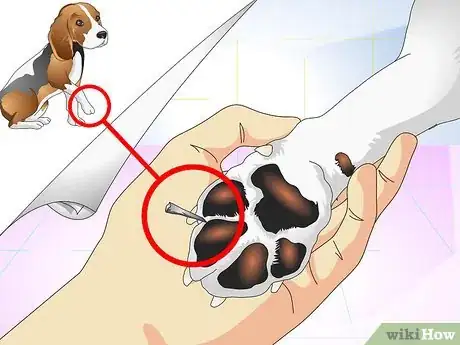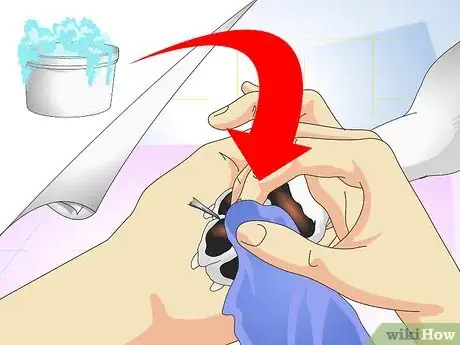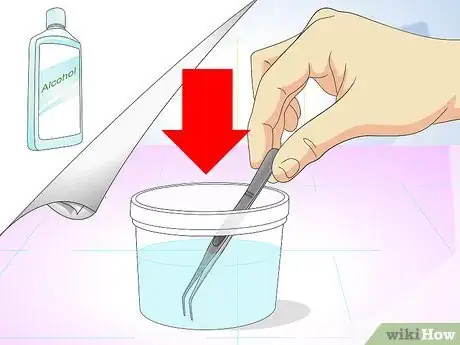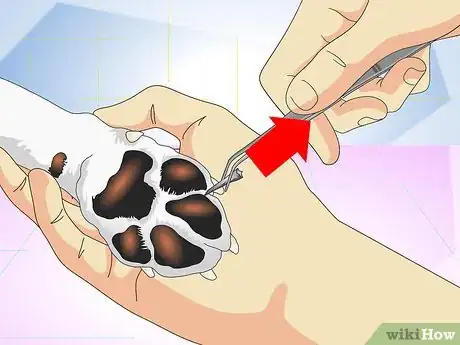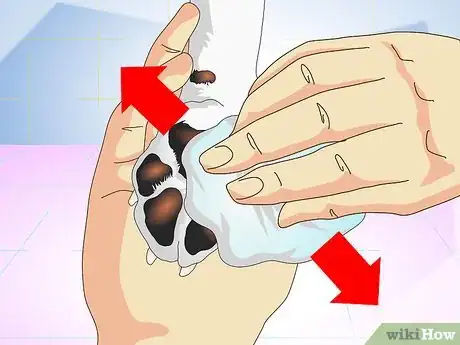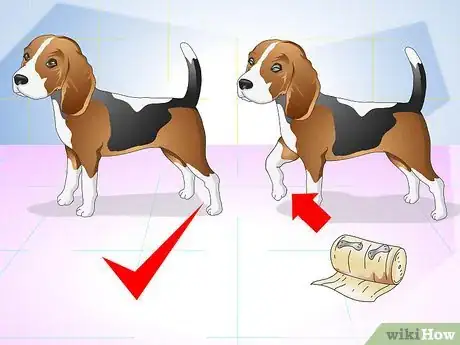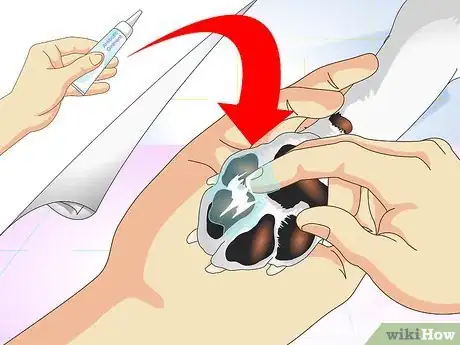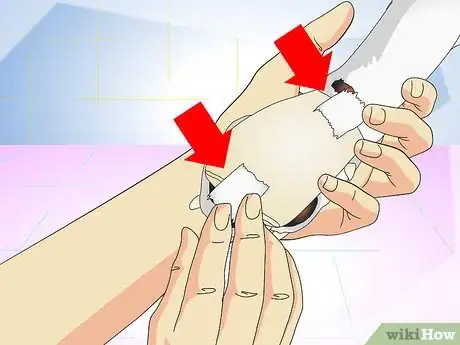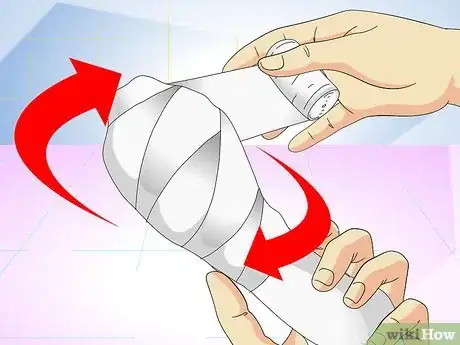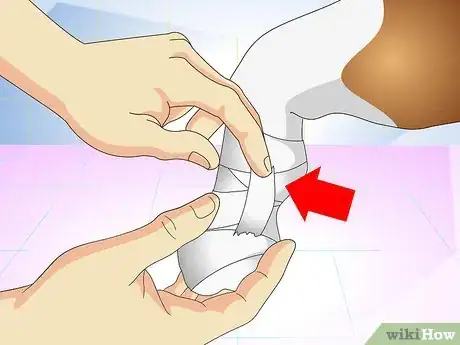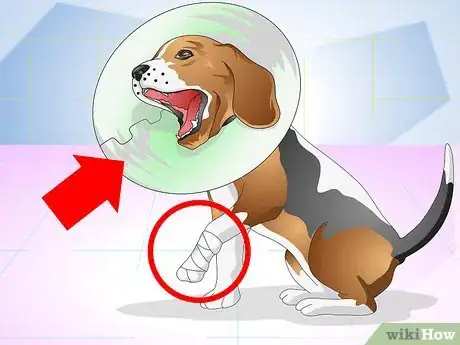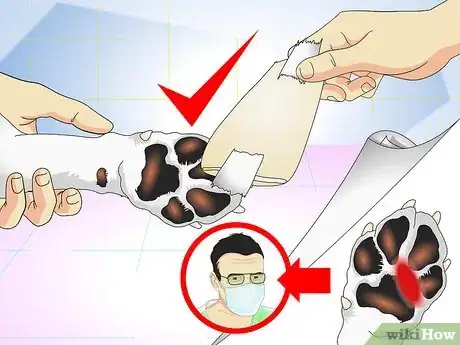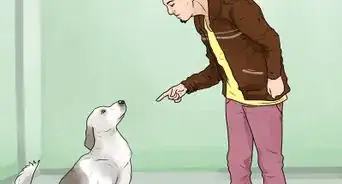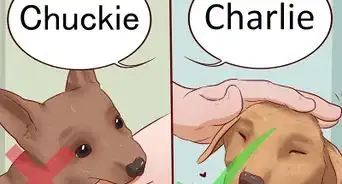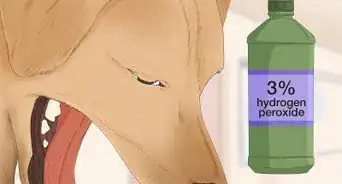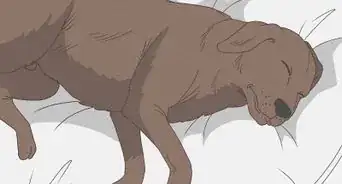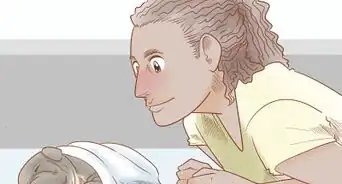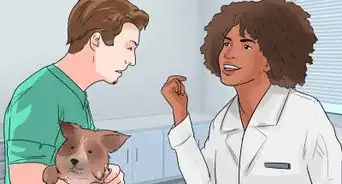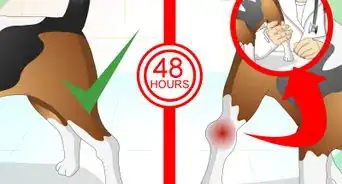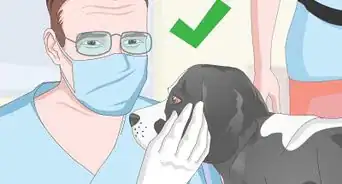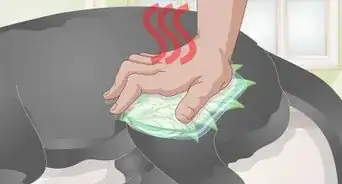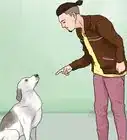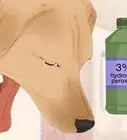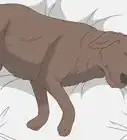This article was co-authored by Shawn Riley. Shawn Riley is a Canine Trainer & Behaviorist based in Tualatin, Oregon. With over 40 years of experience, Shawn trains people to properly establish and maintain leadership roles with their canine companions. Shawn has trained with several acclaimed canine experts and refined The Dog Way training methods through experience and observation of dogs' natural interactions within their groups. Shawn has appeared on several local TV shows and was recruited by National Geographic as the on-set Behavioral Advisor for a national video series called “My Dog Ate What?”
This article has been viewed 108,160 times.
As much as your dog loves to play outside, he can occasionally get a splinter in his paws. Splinters can be very painful for your dog. Fortunately, treating a splinter is a relatively simple process that can be done in the convenience of your own home.
Steps
Removing the Splinter
-
1Find the splinter. Depending on how deeply embedded they are in the skin, splinters are not always easy to see right away. Your dog will probably let you know with his body language where the splinter is. For example, your dog may continually paw at his mouth to try to remove a splinter in a particular paw. He may also lick and bite at whichever area has the splinter. If your dog is holding up one of his legs or is hesitant to put weight on a certain paw, the splinter is probably in that paw.
- Splinters typically do not cause a lot of bleeding, so you may not be able to find the splinter by looking for a wound that’s bleeding.
- In addition to using your eyes, use your hands to gently touch his paws to find exactly where the splinter is. Talk gently and softly with your dog while you are doing this to reassure him that he will be okay.
-
2Clean the affected area. Before attempting to remove the splinter, the area around the splinter should be cleaned thoroughly to prevent infection. Use warm, soapy water and a clean towel to clean the area.[1]
- The area where the splinter is located is probably very painful, so be gentle when you are cleaning the area.
- It may be helpful to fill a shallow bucket with the warm, soapy water. In this way, you could let your dog’s paw soak in the water, which may feel very soothing to him. Use a small towel to clean his paw while it is soaking.
- Use another clean towel to dry his paw after you have cleaned it.
Advertisement -
3Sterilize your tweezers. Sterilizing your tweezers means that you are destroying microorganisms that could cause disease or infection. If your tweezers are not clean, you could cause a skin infection in the area where you remove the splinter. You can sterilize your tweezers by dipping them in rubbing alcohol.
- After you sterilize the tweezers, set them on a clean paper towel so that they can dry and remain clean before you use them.
-
4Remove the splinter with tweezers. After you have your dog’s paw in your hand, get as good a grip as you can on the protruding end of the splinter with the tweezers. If the splinter is embedded too deeply into the skin, it will be very difficult to remove the splinter with your tweezers; if this is the case, you can sterilize a small needle and use the needle to pry the splinter up from under the skin. If you still cannot grip the splinter after using the needle, take your dog to your vet so that they can remove the splinter.
- Just like with cleaning your dog’s paw, be gentle when you are removing the splinter. Your dog is going to be pain while you’re doing this, so talk to him in gentle and soothing tones to reduce his anxiety.
- Be careful not to push the splinter further into the skin, or break the splinter, when trying to pull it out. If either of these things happens, take your dog to the vet so that they can remove the splinter for you.
-
5Clean the affected area again. Just like with cleaning the affected area before removing the splinter, be gentle as you are cleaning the area after you’ve taken the splinter out. This area is still going to be sensitive and painful, so avoid vigorously cleaning the wound.
- Other than warm and soapy water, you can also use a solution that is 50% water and 50% hydrogen peroxide. Hydrogen peroxide is a clear liquid that can be used to clean wounds and prevent infection.
- Dry the affected area with a clean and dry towel.
Bandaging the Affected Area
-
1Determine if the paw needs to be bandaged. Just as when you remove a splinter from your own finger, not all splinter wounds on dogs need to be bandaged after removal. If the puncture wound is tiny, and the dog is now happy to stand on the paw, then do not bandage. Instead, ease back on his exercise for a couple of days, and bathe the paw in salty water after a walk in order to remove road grit.
- If after two days the area looks dry and clean, there is no pus or smelly discharge, and he is walking soundly, then you can return to normal.
- Bandaging would be needed if the puncture hole is large, there is a smelly discharge from the hole, your dog still isn't fully placing weight on his paw after several minutes, or you are not confident that the whole of the splinter came out.[2]
-
2Apply triple antibiotic ointment to the affected area. Preventing infection will be very important after you have removed the splinter. To apply the ointment, place a thick coat of triple antibiotic ointment onto a clean, non-stick 2x2 gauze pad and gently press the pad against your dog’s paw. Alternatively, you can apply the ointment directly to the affected area on your dog's paw.
- Neosporin is a triple antibiotic ointment for humans, but you can use it on your dog to treat the area from where you removed the splinter.
- If you choose to apply the ointment directly to the paw, you will still need to press the gauze against the paw to keep the ointment in place.
-
3Secure the gauze pad to your dog’s paw. To do this, you will need two strips of adhesive tape that are several inches long. Rather than using Scotch tape, use the white adhesive tape that you can find at your local pharmacy.
- While still holding your dog’s paw up, attach one strip of tape on each side of the gauze and press the tape down on your dog’s leg several inches up from the wound. This should look something like a splint.
-
4Wrap cotton gauze around your dog’s paw. Cotton gauze is a roll of white, non-stick gauze that is available at your local pharmacy. Keep your dog’s toes uncovered as you wrap the gauze, and continue to wrap it several inches up your dog's leg. Be careful not to wrap too tightly, since this could cut off circulation. Your dog’s toes will feel cold if there is no circulation. Wrapping too tightly could also cause your dog’s toes to swell. If you notice that you have wrapped the gauze too tightly, immediately loosen the gauze and wrap again more loosely.
- Keeping the toes uncovered will allow you to see if they’re swollen or feel cold.
- If the gauze is too difficult to tear, use scissors to cut the gauze.
-
5Wrap a self-adhesive bandage over the cotton gauze. The self-adhesive bandage will keep the cotton gauze in place. You can purchase this type of bandage at your local pharmacy. As with the cotton gauze, do not wrap this bandage too tightly. Cut the bandage with scissors if you are not able to tear it.
- Cover the bandage with a plastic bag when your dog goes outside to keep the bandage clean and dry.[3]
-
6Prevent your dog from removing the bandage. Your dog will probably try to do everything he can to remove the bandage, which could lengthen the wound-healing process. Other than keeping a close eye on him and stopping him when you see him chew at the bandage, you can put an Elizabethan collar (e-collar) around his neck.[4] An e-collar is one of the most effective methods to keep a pet from bothering their bandage.
- If he chews off the bandage, take this opportunity to inspect the affected area. If the area looks clean without signs of infection (redness, swelling, discharge), you probably will not need to reapply the bandage. If you are unsure, contact your veterinarian for advice.
- If your dog has managed to remove the bandage, he may have also licked the Neosporin. Neosporin can be toxic to dogs, causing signs such as vomiting, drooling, and loss of appetite. If you observe these signs after your dog has removed the bandage, contact the Pet Poison Hotline or your veterinarian immediately.[5]
-
7Remove the bandage after one to two days. The wound caused by a splinter is typically not very serious, so it is not necessary to keep the bandage on for an extended period of time. However, if you notice that the affected area hasn’t healed after several days, take your dog to your vet for closer examination.
- When you remove the bandage and clean off the excess triple antibiotic ointment, the affected area should look clean without any swelling. You should not see any redness or any type of discharge coming from the wound.
- If you see swelling, redness, or discharge, it is quite possible that the wound has become infected. Take your dog to your vet for further treatment.
Things You’ll Need
- Tweezers
- Rubbing alcohol
- Paper towel
- Warm, soapy water
- Small bucket
- Needle
- Several clean towels
- Triple antibiotic ointment
- 2x2 gauze pads
- White adhesive tape
- Cotton gauze
- Self-adhesive tape
- Hydrogen peroxide (optional)
- Epsom salt (optional)
Expert Interview
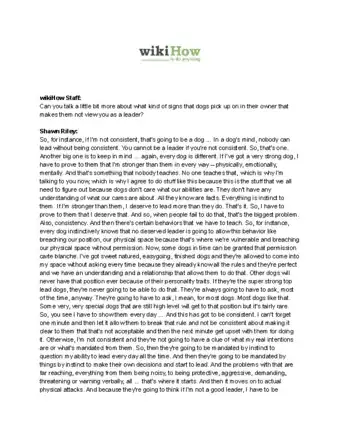
Thanks for reading our article! If you'd like to learn more about caring for dogs, check out our in-depth interview with Shawn Riley.
References
- ↑ http://www.petmd.com/dog/emergency/accidents-injuries/e_dg_puncture_wounds
- ↑ http://www.vetinfo.com/dog-paw-infection.html
- ↑ http://www.vetinfo.com/proper-bandage-dog.html
- ↑ http://www.vcahospitals.com/main/pet-health-information/article/animal-health/bandage-and-splint-care-in-dogs/3766
- ↑ http://www.petpoisonhelpline.com/poison/antibiotic/
About This Article
To treat a dog splinter, start by gently cleaning the surrounding area with warm, soapy water so the wound doesn't get infected. Then, dip a pair of tweezers in rubbing alcohol to sterilize them, and use them to pull out the splinter. If the splinter is too deeply embedded to get a grip on, you may need to take your dog to the vet to have it removed. Once you've removed the splinter, clean the area again with warm, soapy water. For more advice from our Veterinary co-author, like how to bandage a dog's splinter wound, scroll down.
